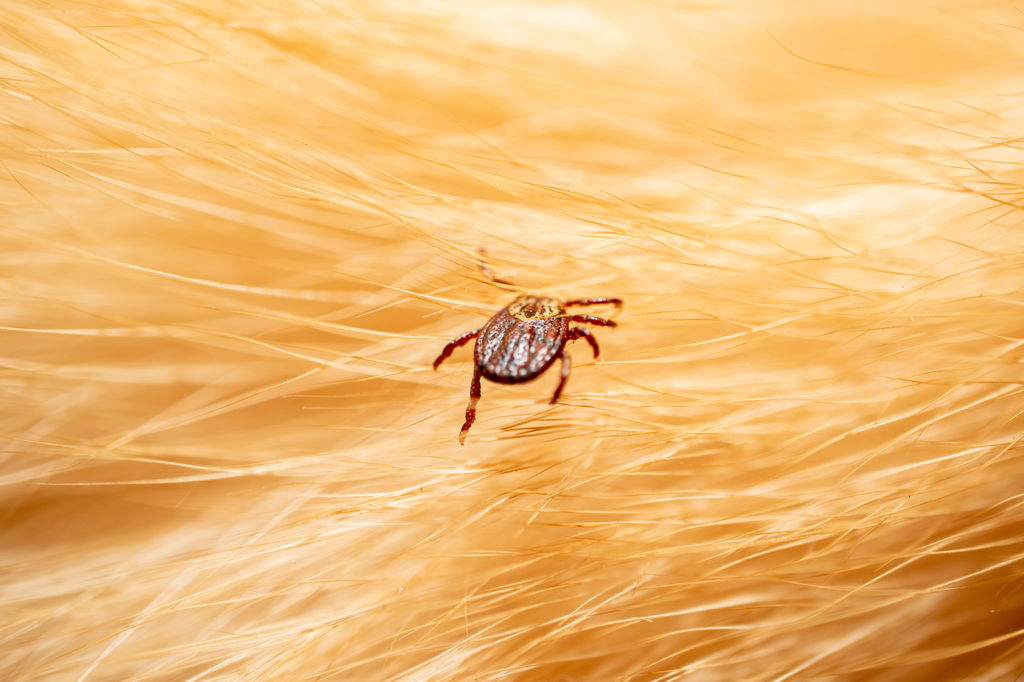Ticks are not only super gross, but also pose serious health risks to our beloved four-legged family members. These tiny parasites can transmit diseases like Lyme disease, ehrlichiosis, and babesiosis, among others. Therefore, implementing effective tick prevention strategies is crucial for ensuring the well-being of our canine companions. In this blog post, we’ll explore the importance of tick prevention for dogs and highlight some of the best practices and products available in the market to keep your furry friend safe and tick-free.

Tick on dog hair.
Understanding the Risks: Ticks are commonly found in grassy, wooded areas and can latch onto your dog when they venture outdoors. It’s essential to be aware of the potential dangers they pose, including the transmission of harmful diseases. Lyme disease, in particular, is prevalent in many regions and can cause symptoms such as lameness, fever, and joint pain. By prioritizing tick prevention, you can significantly reduce the risk of your dog contracting these diseases.
Tick Preventative Measures for Dogs:
1. Regular Tick Checks:
Establish a routine of thoroughly checking your dog for ticks after outdoor activities. Pay close attention to areas such as the head, neck, ears, armpits, and paws. If you find any ticks, promptly remove them using tweezers or a tick removal tool, ensuring you extract the tick completely to prevent infection.

Dog owner checking for and removing tick flea from dog.
2. Tick Control Products:
There are various tick control products available, including spot-on treatments, tick collars, oral medications, and sprays. Consult with your veterinarian to determine the most suitable option for your dog based on their age, health, and lifestyle. These products work by repelling ticks or killing them upon contact, providing an additional layer of protection.
3. Tick-Proof Your Yard:
Keeping your yard tick-free is essential in minimizing the risk of exposure. Regularly mow the lawn, remove leaf litter, and trim overgrown bushes to create an inhospitable environment for ticks. Consider using environmentally-friendly tick repellents and perform regular pest control treatments to keep ticks at bay.

Dog enjoying a tick treated yard.
4. Use Caution in Tick-Prone Areas:
When possible, steer clear of areas where ticks are known to thrive, such as dense woods or tall grasses. Stick to well-maintained trails and open areas, reducing the chances of your dog picking up these pests.
5. Vaccination:
In areas with a high incidence of tick-borne diseases, consult your veterinarian about available vaccinations. While vaccines may not provide full protection, they can help reduce the severity of certain diseases.

Puppy and owner discussing tick prevention with veterinarian
Tick prevention is a critical aspect of responsible pet ownership, ensuring the health and well-being of our dogs. By implementing these preventative measures, including regular checks, using tick control products, and maintaining a tick-free environment, you can significantly reduce the risk of tick bites and the associated diseases. Remember to consult with your veterinarian to determine the most appropriate tick prevention approach for your furry friend. With diligence and proper care, you can keep your canine companion safe, happy, and free from tick-related concerns.






